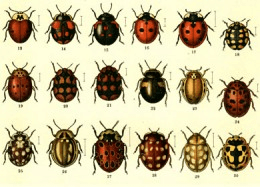Basic Formulas - Statistics - Class 9 PDF Download
Basic statistical measures of a collection of numbers are the mean (aka arithmetic mean, average), median, mode, range, and standard deviation. For most practical applications of statistics, these five measures of central tendency and dispersion will give you enough information about the set of data. These statistics formulas are explained below along with examples of how to apply them using the set
{10,11,10,12,16,12,8,9,14,10,15,12}
How to Calculate the Arithmetic Mean
The average, mean, or arithmetic mean of a set of numbers is the sum of the numbers divided by the size of the set. This is one of the most commonly used measures of "central tendency," the number around which others are clustered. To compute the mean of the set {10, 11, 10, 12, 16, 12, 8, 9, 14, 10, 15, 12} we calculate the expression
(10 + 11 + 10 + 12 + 16 + 12 + 8 + 9 + 14 + 10 + 15 + 12)/12
which equals 11.58333.
How to Calculate the Median
The median of a set is the other commonly used statistical measure of centrality; it is the true "middle" of the set. To compute the median, the first step is to order the data points from least to greatest (or greatest to least). For small sets such as {10, 11, 10, 12, 16, 12, 8, 9, 14, 10, 15, 12}, the task is not so time-consuming. But for larger sets consisting of hundreds or thousands of numbers, people use computer programs. The re-ordered set in this example is
{8, 9, 10, 10, 10, 11, 12, 12, 12, 14, 15, 16}

Now we look for the middle point in the ordered set. If the set has an odd number of elements, there is exactly one point that is the true middle and this is the median. If the set has an even number of elements, as in this example, there are two numbers in the middle. To find the median in this case, you take the average of those two numbers. In this example, the two middle numbers are 11 and 12, so the median is (11 + 12)/2 = 11.5.
How to Calculate the Range
The range of a set is the difference between the highest and lowest values, the span between the maximum and minimum. It gives you an idea of how spread out the points are. In the set {10, 11, 10, 12, 16, 12, 8, 9, 14, 10, 15, 12}, the max value is 16 and the min value is 8. Therefore, the range is 16 - 8 = 8.
How to Calculate the Mode or Modes
The mode of a set is the most frequently occurring number. A set can have more than one mode. In sets where every number occurs just once, there is no mode. In the example set {10, 11, 10, 12, 16, 12, 8, 9, 14, 10, 15, 12} the two modes are 10and 12 since they appear three times each. The other numbers in the set occur fewer than three times each.

How to Calculate the Standard Deviation
Like the range of a set, standard deviation tells you how spread out the numbers are. The standard deviation is a measure of the points' "average" distance or deviation from the mean. This average deviation is the square root of the averagesquared distance. There are two formulas for standard deviation depending on whether your set represents all of the data (population) or a just a random sample.
The population standard deviation formula is
sqrt[ ∑(xi - μ)2 / n ]
where n is the number of elements in the set, xi is a number in the set and μ is the true mean of the population. For example, suppose the set {10, 11, 10, 12, 16, 12, 8, 9, 14, 10, 15, 12} represents quiz scores from a class of 12 students. Since the mean score of the whole class (population mean) is 11.58333, the standard deviation of the scores is
sqrt[ ∑(xi - 11.58333)2/12 ] = 2.32588.
Now suppose the set {10, 11, 10, 12, 16, 12, 8, 9, 14, 10, 15, 12} is actually just a sample of 12 scores from a class with 180 students. If you want to estimate the standard deviation of scores based on a sample taken from a larger population, you must use the sample standard deviation formula
sqrt[ ∑(xi - x¯)2 / (n-1) ]
where n - 1 is one less than the size of the sample, xi is a point in the sample set, and x¯ is the sample mean. In this case, the sample mean is 11.5833, so the sample standard deviation is
sqrt[ ∑(xi - 11.5833)2 / 11 ] = 2.4293.
FAQs on Basic Formulas - Statistics - Class 9
| 1. What are basic formulas in statistics? |  |
| 2. How do you calculate the mean in statistics? |  |
| 3. What is the difference between variance and standard deviation? |  |
| 4. How do you calculate the mode in statistics? |  |
| 5. What is the range in statistics? |  |

|
Explore Courses for Class 9 exam
|

|


















